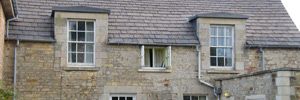 In addition to the thousands of listed buildings in the UK, Britain also has one of the oldest housing stocks in Europe, and many of these lie in conservation areas. By definition, conservation areas are recognised to have a special character or appearance worthy of protection. There are around 10,000 in the UK, and all form part of our nation’s famous and very special heritage. Naturally, when it comes to their repair and renovation, they demand extra special workmanship and attention to detail.
In addition to the thousands of listed buildings in the UK, Britain also has one of the oldest housing stocks in Europe, and many of these lie in conservation areas. By definition, conservation areas are recognised to have a special character or appearance worthy of protection. There are around 10,000 in the UK, and all form part of our nation’s famous and very special heritage. Naturally, when it comes to their repair and renovation, they demand extra special workmanship and attention to detail.
Under the Planning Act 1990, local authorities have the power to designate conservation areas and lay out restrictions on what kinds of improvements can be carried out. Rules dictate how roads, path and boundaries are set out, which building materials should be permitted and how trees and public gardens can be used. Of course, this affects any changes to the roof too.
The chances are you may be called upon to repair or replace a roof within a conservation area. Whilst this may seem daunting at first, it pays to know the facts on what you can and cannot do.
Planning permission
Applications for planning permission for developments in conservation areas are more rigorously assessed and consider whether proposals preserve or enhance the special character or appearance of the conservation area.
If property owners are thinking about carrying out alterations to their property in a conservation area, it is vital that they first seek advice from the council, as planning permission or conservation area consent may be required. In order to navigate the process calmly, it pays to plan ahead.
Any improvements or extensions to the property are likely to take more time, may cost more and when it comes to roof replacement, there are guidelines that will need to be adhered to. For instance, roof extensions are not allowed in conservation areas. If the homeowner wishes to convert the loft, they may find that they are unable to insert a roof window to the roof that is visible from the street.
The same applies to roofing repairs too. Never undertake repairs without consent. Where appropriate, the repair of chimney stacks, pots, parapet walls, gutters, valleys, flashings and other leadwork, rainwater goods and fascias, soffits and eaves will all need to be seriously considered. Alterations to these items may require planning permission or listed building consent.
Sourcing like for like
As the roof forms part of the historic character of individual buildings and conservation areas, it is important that the continuity of roofing materials is maintained. The use of unsympathetic roofing materials can have a serious and detrimental effect on the appearance of the area and seriously compromise its historic character.
It may not be as simple as using a local supplier on the internet for roofing materials. Instead, you may have little choice but to find a specialist who can source an exact replica of the previous item.
Many buildings in conservation areas feature roofs with original clay tiles that may no longer be available. As compromising with an unsympathetic product is not permissible, an option is to source second hand or reclaimed tiles. However, finding the right match for existing tiles that have the required quality for reuse can be a difficult task, particularly as many of the reclaimed tiles in salvage yards are sold with no assurance of future durability. Alternatively, you can source genuine handmade reproduction tiles that boast quality, aesthetics, and performance, such as SIG’s SIGnature Clay Tiles or SIGA Slate Heritage Reproduction Stone products.




